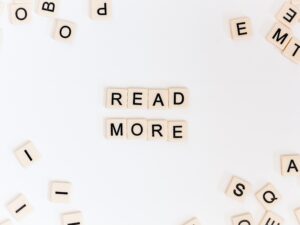Learning Phonics – be it jolly, cheerful, miserable or otherwise
Adapted from an article written by Meryl-lynn Pluck | Founder Rainbow Reading

Definition of phonics
Phonics is simply the system of relationships between letters and sounds in a language. It is often used to refer to the method of teaching people to read by correlating sounds with symbols in an alphabetic writing system. For example when your child learns that the letter c has the sound of /c/ and “tion” sounds like /shun/, he is learning phonics.
Should I be teaching phonics?
There’s no denying phonics is an important element in reading. However, without the use of other cues such as what makes sense and sounds right, the “reading” task is reduced to a decoding task. What’s wrong with that?
“Reading” without understanding is NOT reading at all!
We should NOT be giving children the impression that reading is a pure decoding task. Yes, what’s on the page is obviously important but equally or even more important is what’s in the child’s head; prior experiences and learning he can relate to, language structures he has mastered that can be used, his understanding of what makes sense and sounds right.
With an over-emphasis on phonics the beginning reader is less likely to enjoy or understand what he or she is “reading”. There are also so many exceptions to rules and irregularities in the English language that “sounding out” is a risky (at best) strategy to use as a first line of attack when reading. Consider the example above where we claimed the letter c has the sound of /c/. Exceptions to this rule include when the c is in circle or chase.
Should I get students hooked on phonics?
For all of the above reasons it is our firm recommendation that concentration should be on improving what’s in the learner’s head.
You’ll get the most bang for your buck if you:
- Cultivate your child’s language
- Foster a love of reading
- Build an appreciation that reading makes sense
These can be achieved by:
- Having students read lots and lots of books (a book a day minimum)
- Discussing stories and illustrations before reading (orientation questions are available for all of our books)
- Asking questions after reading (we have comprehension questions for all of our books)
The big issues with phonics:
Heteronyms – there are many English words that are spelled the same but pronounced differently.
Here are some examples below (there are many others).
Heteronym Examples
|
read |
live |
wind |
wound |
tear |
use |
present |
|
bow |
row |
sow |
sewer |
close |
perfect |
desert |
|
excuse |
polish |
lead |
graduate |
does |
produce |
record |
|
bass |
number |
dove |
drawer |
house |
project |
progress |
It is only when heard and practised in context that the meaning of these types of words become clear and we know how to pronounce them. For example:
- After taking a shot with his bow, the archer took a bow.
- No one could believe how much produce our garden could produce.
- There’s no dessert in the desert for those who desert.
- The family was hoping their live plants would live.
- There’s simply no use for something you can’t use.
- They were going to project the project at the local theatre.
- The president was there to record their record attempt.
- The salesman was standing so close it was impossible to close the door.
- The artist worked for hours to perfect the nearly perfect work.
- The queen was present to present the medal.
- The student was asked to read the book the rest of the class had read.
Add to this words spelled in a similar way that are pronounced differently. For example: cough, though, bough, tough, hiccough, to name just one group. How would phonics deal with the “ough” sound here?
Summary
English is a complex language with too many exceptions to rules. The best way learn is to at least supplement with a whole-language approach and to promote milage (lots of practice). Readers need to be able to access all cues available; including illustrations and text around the difficult words to provide sense and structure.
Our series for early readers (miniRAINBOWS) have pages to test letter-sounds and sight-words. Beyond this, it is simply best to hear and practice high-frequency words with a scattering of interest/context words throughout stories. Our New Heights series is designed like this – books to match the reader’s level of difficulty for the right mix of challenge and enjoyment. Supporting activities also help with comprehension and reading enjoyment.
Recommended Resources
Interested in our early learning series, miniRAINBOWS? Click here
If you’re looking for a whole-language reading approach that compliments phonics, please see below:

• Conference guides and outlines
• Audio-assistance (accelerates reading improvement by an average of 400%)
• Levelled books with age-appropriate topics and pictures
• Title-specific questions to increase depth of learning
• Supporting activities in enhance and check comprehension



